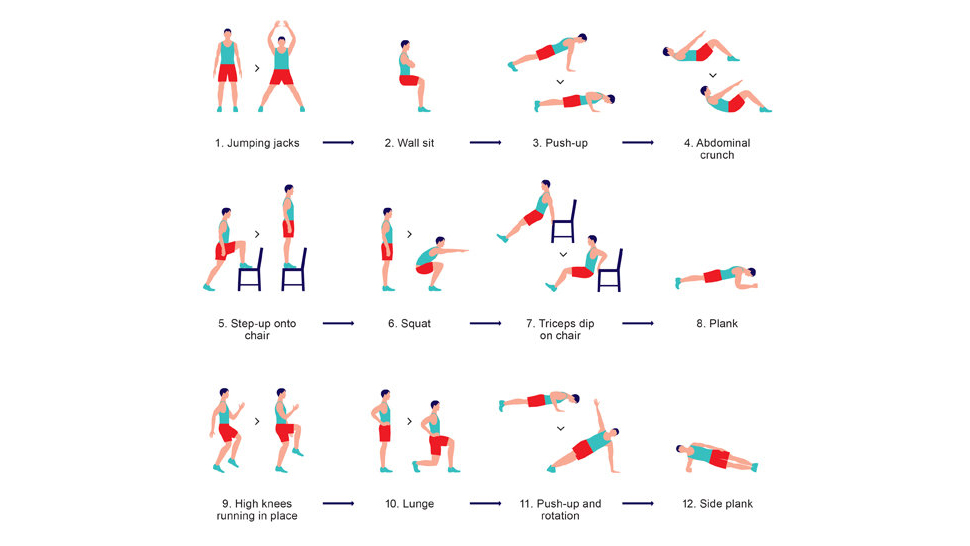The term 7-minute workout comes from a study that sought to create the most effective workout that could be done in the shortest period of time, using only bodyweight exercises and requiring no equipment. This group utilized a technique known as high-intensity circuit training (HICT), which combines aerobics and resistance training into a single activity that is able to get your heart rate above the necessary levels and give you the benefits of exercise in a quick a time frame as possible. The exercises are designed to give you a total body exercise that significantly increases your heart rate while exercising the lower, upper, and core and goes at a pace that forces you to maintain the increased heart rate while developing strength.
This is not about cheating, but it is about being realistic about the fact that brief daily workout is better than most people’s routines. This should not be the most you do, but the minimum.
You are going to need some empty space, optionally a sturdy chair, and then you will be able to do it. The exercise and concept were written up by the New York Times in an article “The Scientific 7-Minute Workout“, and the concept quickly spread across the internet, spawning a series of apps and videos and additional modifications all known as the “7-Minute Workout.”
I will go into more detail below, but here is the video workout if you are ready to follow along (sorry about some of the sounds, we have more options below):
The following is an example of a 12-station HICT program. All exercises can be done with body weight and implement easily acquired in almost any setting (e.g., home, office, hotel room, etc.). The exercise order allows for a total body exercise to significantly increase the heart rate while the lower, upper, and core exercises function to maintain the increased heart rate while developing strength.

These are the exercises:
- Jumping jacks Total body
- Wall sit Lower body
- Push-up Upper body
- Abdominal crunch Core
- Step-up onto chair Total body
- Squat Lower body
- Triceps dip on chair Upper body
- Plank Core
- High knees/running in place Total body
- Lunge Lower body
- Push-up and rotation Upper body
- Side plank Core
Here are some apps that can help you with it: iPhone app and an Android.
Check out the original study and the NYT article.
